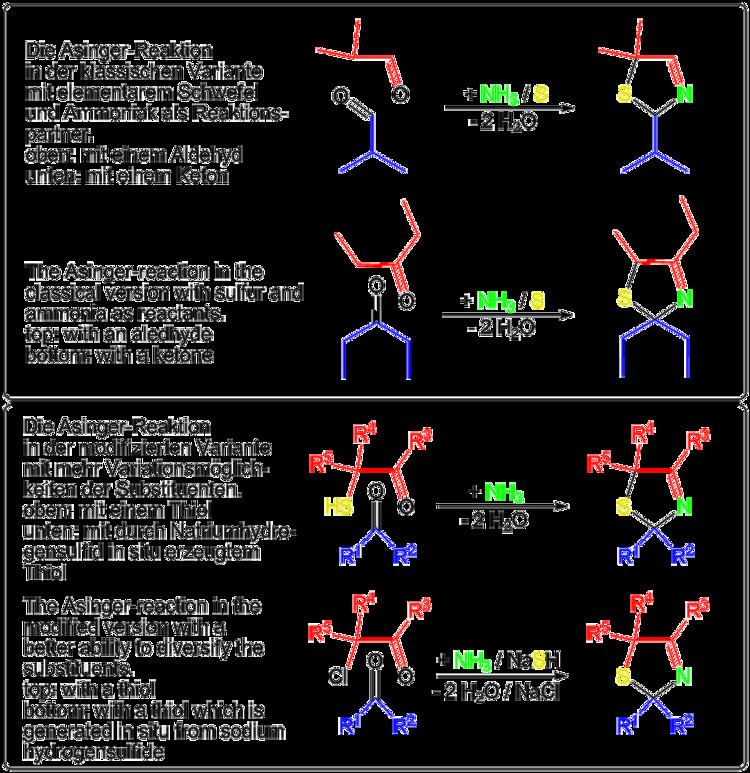 | ||
The Asinger-reaction was invented in 1956 by Friedrich Asinger. The Asinger-reaction is a multicomponent reaction and is sometimes referred to as A-4CR (short for Asinger-4 component reaction):
An α-halogenated carbonyl-component reacts with sodium hydrosulfide (NaSH) and forms a Thiol in situ. The thiol reacts directly with another carbonyl component and ammonia to form a thiazoline. The reaction works also by using elemental sulphur, an α–substituted ketone, another carbonyl component and ammonia; in this case, a mixture of products is formed.
The formation of 3-thiazolines also occurs by using α-thioaldehyde or α-thioketone and ammonia.
A simplyfied route of the Asinger-reaction was developed by Degussa. An α-halogenated carbonyl compound reacts with sodium hydrosulfide (NaSH) and forms a Thiol in situ which reacts directly with aldehydes or ketones and ammonia to 3-thiazolines. The chemical industry developed based on the Asinger-reaction multi stage processes for the production of pharmaceuticals like D-Penicillamine and the aminoacid DL-cysteine.
